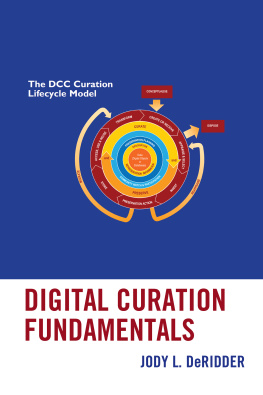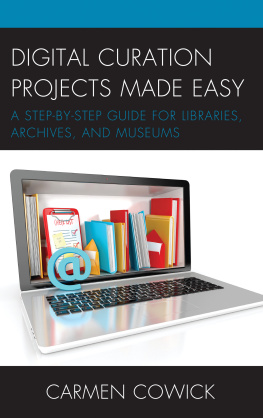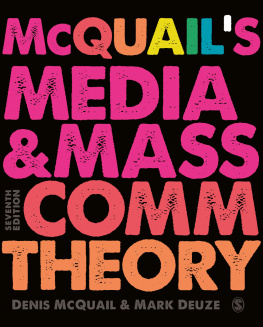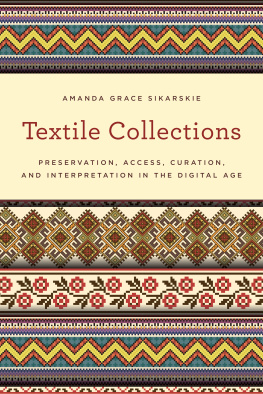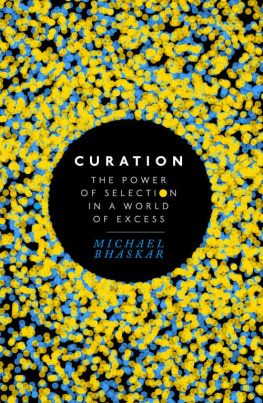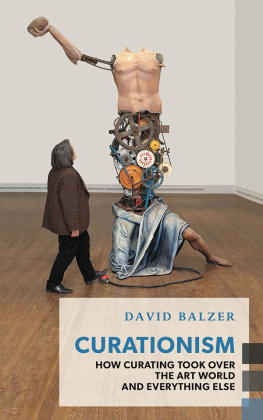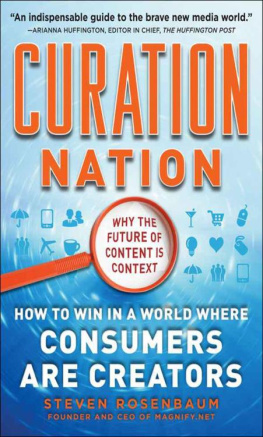MJ Robinson - Television on Demand: Curatorial Culture and the Transformation of TV
Here you can read online MJ Robinson - Television on Demand: Curatorial Culture and the Transformation of TV full text of the book (entire story) in english for free. Download pdf and epub, get meaning, cover and reviews about this ebook. year: 2017, publisher: Bloomsbury Academic, genre: Romance novel. Description of the work, (preface) as well as reviews are available. Best literature library LitArk.com created for fans of good reading and offers a wide selection of genres:
Romance novel
Science fiction
Adventure
Detective
Science
History
Home and family
Prose
Art
Politics
Computer
Non-fiction
Religion
Business
Children
Humor
Choose a favorite category and find really read worthwhile books. Enjoy immersion in the world of imagination, feel the emotions of the characters or learn something new for yourself, make an fascinating discovery.

- Book:Television on Demand: Curatorial Culture and the Transformation of TV
- Author:
- Publisher:Bloomsbury Academic
- Genre:
- Year:2017
- Rating:4 / 5
- Favourites:Add to favourites
- Your mark:
Television on Demand: Curatorial Culture and the Transformation of TV: summary, description and annotation
We offer to read an annotation, description, summary or preface (depends on what the author of the book "Television on Demand: Curatorial Culture and the Transformation of TV" wrote himself). If you haven't found the necessary information about the book — write in the comments, we will try to find it.
Since 2010 ?curation? has become a marketing buzzword. Wrenched from its traditional home in the world of high art, everything from food to bed linens to dog toys now finds itself subject to this formerly rarified activity. Most of the time the term curation is being inaccurately used to refer to the democratization of choice ? an inevitable development and side effect of the economics of long tail distribution. However, as any true curator will tell you ? curation is so much more than choosing ? it relies upon human intelligence, agency, evaluation and carefully considered criteria ? an accurate, if utopian definition of the much-abused and overused term.
Television on Demand examines what happens when curation becomes the primary way in which media users or viewers engage with mass media such as journalism, music, cinema, and, most specifically, television. Mass medias economic model is based on mass audiences ? not a cornucopia of endless options from which individuals can customize their intake. The rise of a curatorial culture where viewers create their own entertainment packages and select from a buffet of viewing options and venues has caused a seismic shift for the post-network television industry ? one whose ultimate effects and outcomes remain unknown. Curatorial culture is a revolutionary new consumption ecology ? one that the post-network television producers and distributors have not yet figured out how to monetize, as they remain in what anthropologists call a ?liminal? state of a rite of passage ? no longer what they used to be, but not yet what they will become.
How does an advertiser-supported medium find leave alone quantify viewers who DVR This is Us but fast-forward through the commercials; have a season pass to The Walking Dead via iTunes to watch on their daily commutes; are a season behind on Greys Anatomy via Amazon Prime but record the current season to watch after theyre caught up; binge watched Orange is the New Black the day it dropped on Netflix; are watching new-to-them episodes of Downton Abbey on pbs.org; never miss PewDiePies latest video on YouTube, graze on Law & Order: SVU on Hulu and/or TNT and religiously watch Jimmy Fallon on The Tonight Show via digital rabbit ears? While audiences clamor for more story-driven and scripted entertainment, their transformed viewing habits undermine the dominant economic structures that fund quality episodic series. Legacy broadcasters are producing more scripted content than ever before and experimenting with new models of distribution ? CBS will premiere its new Star Trek series on broadcast television but require fans to subscribe to its AllAccess app to continue their viewing. NBCs original Will & Grace is experiencing a syndication renaissance as a limited-run season of new episodes are scheduled for fall 2017. At the same time, new producing entities such as Amazon Studios, Netflix and soon Apple TV compete with high-budget ?television? programs that stream around traditional distribution models, industrial structures and international licensing agreements. Television on Demand: Curatorial Culture and the Transformation of TV explains and theorizes curatorial culture; examines the response of the ?industry,? its regulators, its traditional audience quantifiers, and new digital entrants to the ecosystem of the empowered viewer; and considers the viable future(s) of this crucial culture industry.
MJ Robinson: author's other books
Who wrote Television on Demand: Curatorial Culture and the Transformation of TV? Find out the surname, the name of the author of the book and a list of all author's works by series.

